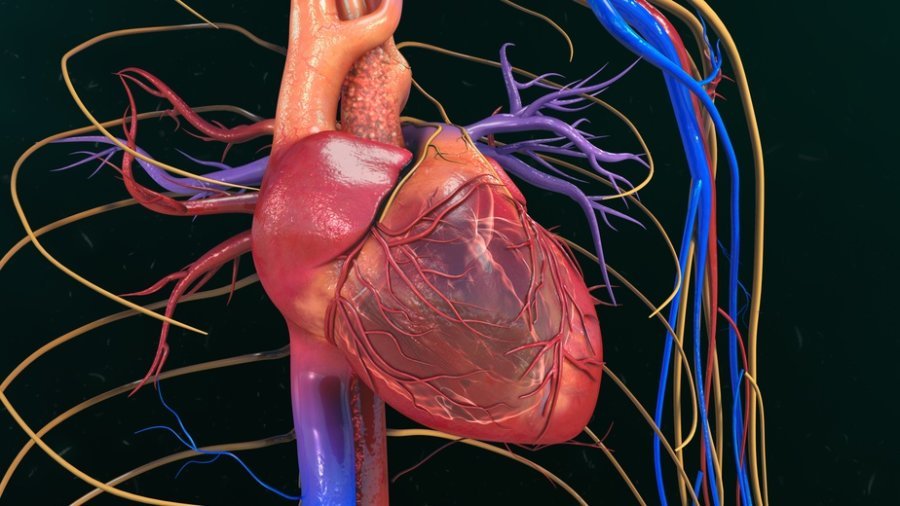


As of Beijing time The data is from a third-party organization and is only for reference.
For actual information, please refer to:www.eastmoney.com
Address: 20 Maguire Road, Suite 103, Lexington, MA 02421(America)
Tel: +1(626)986-9880
Address: Allia Future Business Centre Kings Hedges Road Cambridge CB4 2HY, UK
Tel: 0044 7790 816 954
Email: marketing@medicilon.com
Address: No.585 Chuanda Road, Pudong New Area, Shanghai (Headquarters)
Postcode: 201299
Tel: +86 (21) 5859-1500 (main line)
Fax: +86 (21) 5859-6369
© 2023 Shanghai Medicilon Inc. All rights reserved Shanghai ICP No.10216606-3
Shanghai Public Network Security File No. 31011502018888 | Website Map


Business Inquiry
Global:
Email:marketing@medicilon.com
+1(626)986-9880(U.S.)
0044 7790 816 954 (Europe)
China:
Email: marketing@medicilon.com.cn
Tel: +86 (21) 5859-1500



Scientists from the Baylor College of Medicine and the Texas Heart Institute studyingpathways underlying heart cell functions say they have discovered a previously unknown connection between processes that keep the heart from repairing itself. This finding (“Dystrophin Glycoprotein Complex Sequesters Yap to Inhibit Cardiomyocyte Proliferation”),published in Nature, may lead to new approaches that will promote heart cell renewal in the future.

“We are investigating the question of why the heart muscle doesn’t renew,” says senior author James Martin, M.D., Ph.D., professor and Vivian L. Smith Chair in Regenerative Medicine at Baylor College of Medicine. “In this study, we focused on two pathways of cardiomyocytes, or heart cells: the Hippo pathway, which is involved in stopping renewal of adult cardiomyocytes, and the dystrophin glycoprotein complex (DGC) pathway, essential for cardiomyocyte normal functions.”
“We are also interested in studying mutations in DGC components because patients with these mutations have a muscle wasting disease called muscular dystrophy.”
Previous work suggested that components of the DGC pathway may somehow interact with members of the Hippo pathway. Here, Dr. Martin and colleagues studied the consequences of this interaction in animal models. The investigators genetically engineered mice to lack genes involved in one or both pathways and then determined the ability of the heart to repair an injury. These studies showed for the first time that dystroglycan 1, a component of the DGC pathway, directly binds to Yap, a part of the Hippo pathway, and that this interaction inhibited cardiomyocyte proliferation.
“We found that the DGC component dystroglycan 1 (DAG1) directly binds to Hippo pathway effector Yap to inhibit CM [cardiomyocyte]proliferation. The Yap-DAG1 interaction was enhanced by Hippo-induced Yap phosphorylation, revealing a connection between Hippo pathway function and the DGC,” write the researchers. “After injury, Hippo-deficient postnatal hearts maintained organ size control by repairing the defect with correct dimensions, whereas postnatal hearts doubly deficient for Hippo and the DGC showed CM overproliferation at the injury site. In matureMdxmouse hearts—a model of DMD—Hippo deficiency protected against overload-induced heart failure.”
“The discovery that the Hippo and the DGC pathways connect in the cardiomyocyte and that together they act as ‘brakes’ or stop signals to cell proliferation opens the possibility that by disrupting this interaction one day it might be possible to help adult cardiomyocytes proliferate and heal injuries caused by a heart attack, for example,” notes Dr. Martin, who adds that anotherlong-term application of this discovery could be to improve cardiac function in children with muscular dystrophy.
“Patients with muscular dystrophy can have severe reduction in cardiac function,” according to Dr. Martin. “Our findings may help to design medicines to slow down cardiac decline in muscular dystrophy by stimulating cardiomyocyte proliferation. In order to do that, we need more research to understand cardiomyocyte growth control pathways in greater detail.”